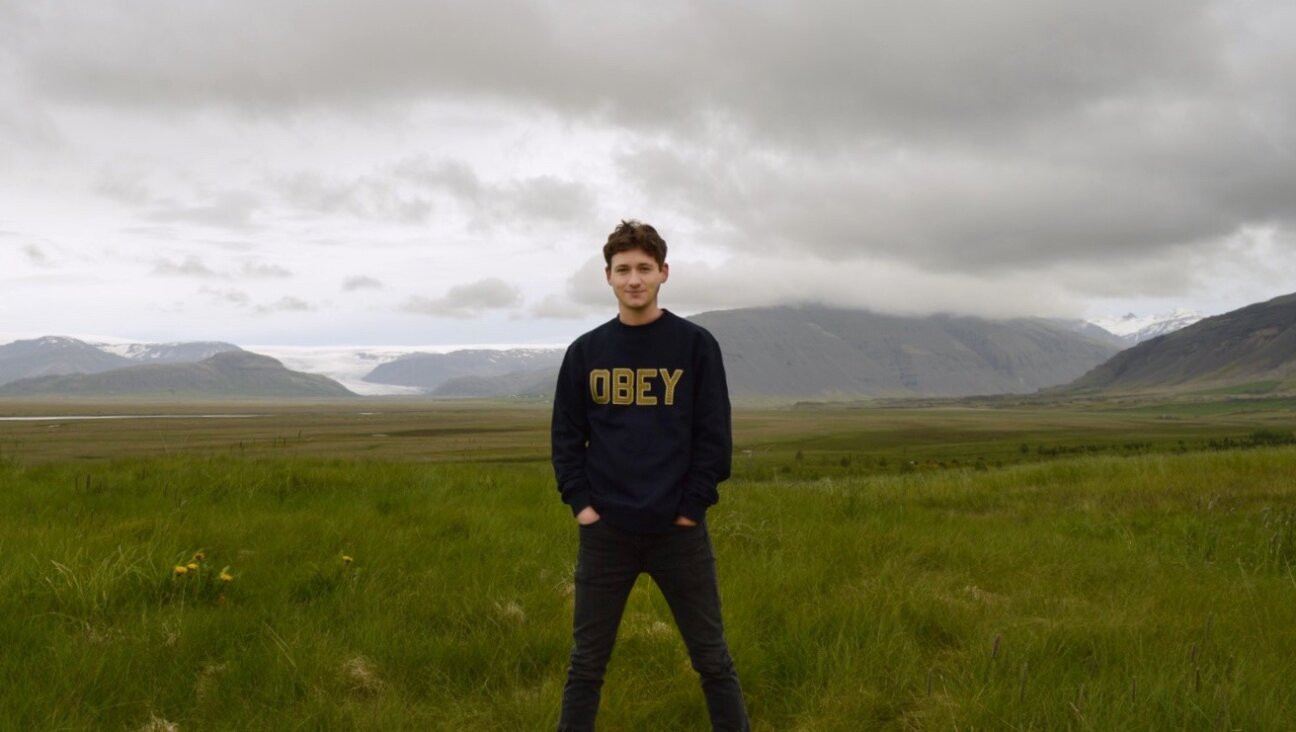The Luck of the Yiddish
If you look up “translate” in a dictionary, you may be surprised to find that the first definition is “to bring into the afterlife, without causing death.” This isn’t as peculiar as it sounds. The rabbis teach us that our world is like a vestibule, a waiting room where we prepare ourselves for the World to Come. As the last survivors of the world’s fading cultures pass away each year, hundreds of languages die with them — and hundreds more languish in the waiting room, hoping for translations to renew their days among the living. Next week, New Yorkers will have a chance to witness such a resurrection at a Poetry Society of America event titled “Vital Languages: An Evening of Irish and Yiddish Poetry.”
The program, which the Poetry Society anticipates as the first of a series that will include readings in Navajo, Hmong and various creoles, is part of the society’s larger effort to attract readers who wouldn’t normally attend a poetry reading. “There’s a lot of longing for these languages, even among people who don’t speak them,” society program director Eve Grubin told the Forward. Fittingly, perhaps, a kosher deli will provide food for the “Vital Languages” reception; the Irish Consulate will provide the drinks.
Yiddish and Irish? Is this a bad joke whose punch line involves over-loved and undercooked corned beef?
If you think so, consider the life of one of the participants, Nuala Ní Dhomhnaill. In the 1950s, at age 5, Ní Dhomhnaill was sent to live with relatives in West Kerry, a rural corner of Ireland lacking electricity, running water, radio or television. What it did have was a population that spoke Irish — a 1,500-year-old language, sometimes called Gaelic, with few native speakers today. As a teenager at an English-speaking Catholic boarding school, Ní Dhomhnaill began writing poetry in Irish “because the nuns who snooped in my desk couldn’t read it.” But she also knew that “Irish had chosen me,” that circumstance had made her one of the few writers in a language with words like bearradoir, “a cow that eats the hair of other cows’ tails,” or dúchas, “physiological heritage” — words left over from farmers who kept centuries of unwritten stories in their heads or who could count 10 generations back and know, when a baby’s toes curled, which great-great-great-grandparent was the source.
Now consider the childhood of another participant, Irena Klepfisz. At age 2, Klepfisz escaped with her mother from the Warsaw Ghetto and then lived in hiding until the end of World War II. Arriving in America via Sweden, Klepfisz struggled to master English in public school while attending Yiddish supplementary school and speaking Polish at home. For Klepfisz, poetry — in English — was also a hiding place, a “private language” where no teacher could criticize her hesitant use of new words. But the linguistic shifts remained daunting. “Words attach themselves to our most intimate experiences,” she told the Forward. “When you move into a new language, you lose that intimacy, and it’s a tremendous trauma.” Klepfisz treats that trauma through her own poetry, which braids Yiddish into English, and by translating the works of Yiddish women writers. To Klepfisz, who grew up with a deep awareness of the lost life of Jewish Warsaw, the supposed parallel between Yiddish and Irish is not so strange. “We each have a goldene keyt,” she said, using the expression “golden chain” that signifies the Yiddish literary tradition.
But what about the differences? Wasn’t Yiddish murdered, while Irish died a natural death? Well, yes, and no. The Irish language did not exactly go gently. When the last Irish princes were defeated by the British in 1601, the language was largely crushed. The bell tolled again in the mid-1800s, when the notorious potato blight decimated the population and spurred survivors to head for America on what the Irish called “coffin boats” — and rightly so, since Irish immigrants who didn’t speak English survived for only an average of four years in their new land. And credit for the decline of Yiddish does not lie solely with murderous antisemites, but also with early Israelis who consciously eradicated Yiddish — and with the half-conscious choices of American Jews. The real difference between the Yiddish and Irish poets in “Vital Languages” is simpler, and sadder. To reach participating Irish poets, one calls them up at home — in Ireland, of course. But where does one call to reach a Yiddish poet?
Usually, one has to place a call to the World to Come. At “Vital Languages,” while Ní Dhomhnaill will read from her own work, Yiddish will be represented exclusively by translators, including Klepfisz and Leonard Wolf. The only living Yiddish poet featured will be Avrom Sutzkever, a literary giant who is nearing 90, lives in Israel and will not attend. For the others, translation is the only bridge to an afterlife in the land of the living — an afterlife that could, conceivably, be more enduring than life. Paul Muldoon, a celebrated English-language poet who will read his translations of Ní Dhomhnaill’s poetry at “Vital Languages,” believes that translations can surpass original works. “Many things are lost in translation,” he admits, “but many more are found.”
Stranger things can happen in the afterlife. Jennifer Kronovet, a program associate at the Poetry Society and one of the conceivers of “Vital Languages,” learned Yiddish because she was inspired by an essay of Ní Dhomhnaill’s about poetry in Irish. And at “Vital Languages,” the acclaimed American poet C.K. Williams will read poems by Sutzkever that he translated from Yiddish — a language he never learned. He collaborated with Yiddish scholar David Roskies, who provided literal translations and taped readings to help Williams find “music that fit the original.” “The problem with translating poetry isn’t getting the sense from the other language,” Williams told the Forward, “but making a poem in your own language.”
Remaking Yiddish and Irish poems in English is particularly important because so few people can read the originals. Which raises the ultimate question: What are “vital languages,” anyway? Aren’t these languages basically dead?
Compared to all the languages that disappear unnoticed each year, no. Ní Dhomhnaill lives in a country where people learn Irish at school. And while few master the language, it pervades English speech in Ireland in a way few natives notice. “There’s a water table of the language that’s quite serious,” Ní Dhomhnaill said.
And what of Yiddish — dead or “vital”? Klepfisz, who will be teaching a Yiddish translation workshop at YIVO starting next week, pointed to growing numbers of Yiddish students as a sign of the language’s vigor. “I hear people dismissing the Yiddish revival, but I’m not sure how they know,” she said, recalling how Hebrew was revived. “You never know what the future holds.”
In her poem “The Language Issue,” Ní Dhomhnaill agrees, borrowing an image that Yiddish readers would recognize:
Our world may be a waiting room, but it is a crowded one, filled with people shouting, singing and whispering words that those sitting right beside them only rarely understand. Perhaps the World to Come is best understood not as an afterlife, but as the future — an unexpected place where possibilities will travel on rafts of language, ready for someone to draw them up onto dry land.
Dara Horn, a doctoral student in comparative literature at Harvard University and author of “In the Image” (Norton, 2002), last appeared in these pages January 10 reviewing books by Sholom Aleichem and Itzik Manger.
“Vital Languages: An Evening of Irish and Yiddish Poetry,” will take place at New York University’s Hemmerdinger Hall next Thursday at 7:30 p.m.
FOUND IN TRANSLATION: ‘Many things are lost in translation,’ says Paul Muldoon (left), ‘but many more are found.’ Muldoon will read poems he translated from Irish by Ní Dhomhnaill, while C.K. Wright (right) will read poems he translated from Yiddish by Israeli poet Avrom Sutzkever, at New York University on March 6.

I hope you appreciated this article. Before you go, I’d like to ask you to please support the Forward’s award-winning journalism this Passover.
In this age of misinformation, our work is needed like never before. We report on the news that matters most to American Jews, driven by truth, not ideology.
At a time when newsrooms are closing or cutting back, the Forward has removed its paywall. That means for the first time in our 126-year history, Forward journalism is free to everyone, everywhere. With an ongoing war, rising antisemitism, and a flood of disinformation that may affect the upcoming election, we believe that free and open access to Jewish journalism is imperative.
Readers like you make it all possible. Right now, we’re in the middle of our Passover Pledge Drive and we need 500 people to step up and make a gift to sustain our trustworthy, independent journalism.
Make a gift of any size and become a Forward member today. You’ll support our mission to tell the American Jewish story fully and fairly.
— Rachel Fishman Feddersen, Publisher and CEO
Join our mission to tell the Jewish story fully and fairly.
Our Goal: 500 gifts during our Passover Pledge Drive!






















